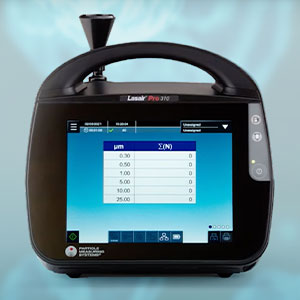Aerosol particle counters play a pivotal role in maintaining cleanroom air quality, providing rapid counting and sizing of contaminant particles. While users often perceive them as simple devices, it’s crucial to understand the technology behind these instruments and the significance of the data they generate.
The Diversity of Particle Types
Particles come in various sizes, shapes, and compositions, presenting challenges in measurement. From skin flakes to fungal spores, the sources of particles in cleanrooms are diverse, requiring an understanding of their nature for accurate measurement, identification, and control.
skin flakes to fungal spores, the sources of particles in cleanrooms are diverse, requiring an understanding of their nature for accurate measurement, identification, and control.
Particle Size Measurement
This paper discusses the relevance of particle sizes and explores the micrometer and nanometer scales, especially in industries like pharmaceuticals and microelectronics manufacturing. The non-uniformity of particle structures raises questions about the qualifying criteria for size, with different industries adopting various measurement techniques.
Calibration with Latex Spheres
Aerosol particle counters are calibrated using monodispersed latex spheres, establishing a reference standard. The calibration process is essential for accurate size determination and maintaining consistency in data generation per ISO 21501-4.
How Aerosol Particle Counters Work
Considering the light scattering principle, this paper explains the core mechanism of aerosol particle counters. Using laser diodes and optical blocks, these instruments measure the interaction between particles and light, converting the energy into electrical pulses for size and quantity determination.
Factors Influencing Particle Sizing
Different physical properties, such as reflected, refracted, and diffracted light, impact particle sizing. Understanding the interaction of light and particles is crucial, as it influences the accuracy of data generated by aerosol particle counters.
Want to learn more?

